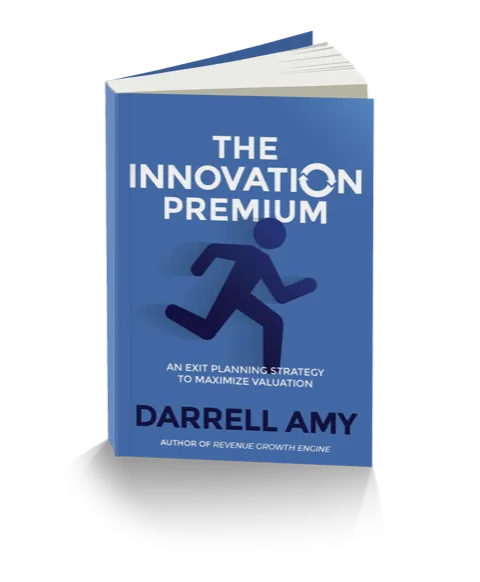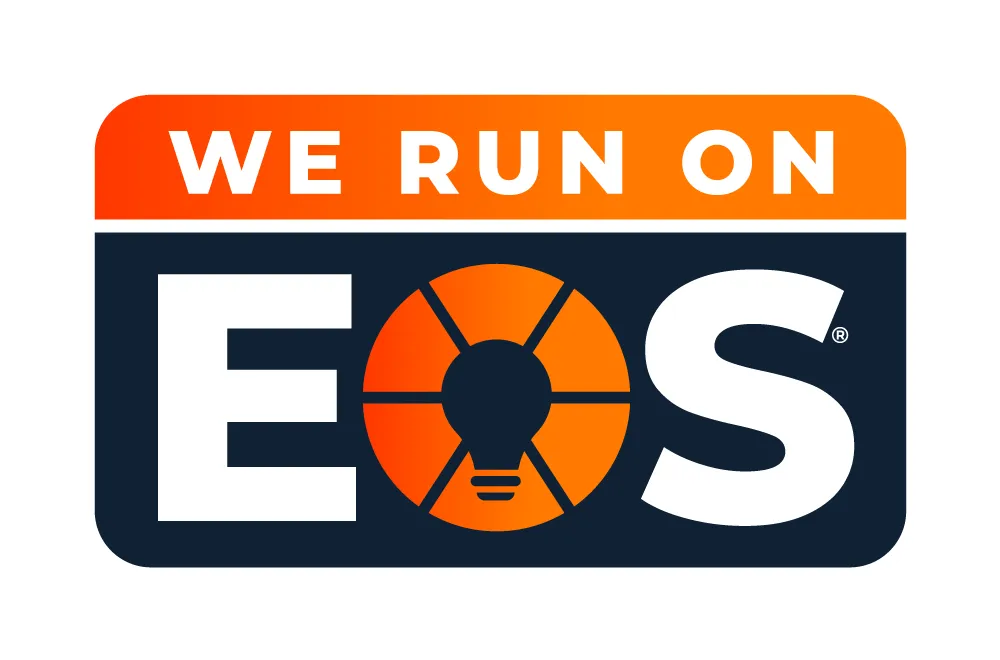THE VALUE CREATION BLOG

How Processes Optimization Can Increase Profitability and Maximize Company Valuation
In today’s business environment, valuation isn’t just about growth—it’s about growing profitably. Investors and acquirers care about profitability because it directly impacts both a company’s current earnings and its ability to sustain growth in the future.
A business that can scale without significantly increasing costs is inherently more attractive because it offers higher margins and lower risk.
But profitability alone isn’t enough. Businesses that demonstrate operational efficiency through well-documented processes, reusable templates and checklists, and smart automation are more transferable, meaning they can be handed over to a new owner without a steep learning curve or reliance on key individuals. This readiness increases a company’s valuation multiple, making the business more valuable beyond just its profit.
In essence, scalable systems:
Improve operational efficiency, driving up profit margins.
Create consistency, leading to predictable, repeatable results.
Reduce key person risk, making the business more transferable and less dependent on specific individuals.
Enhance growth potential, which both increases current earnings and boosts the multiple investors or acquirers are willing to pay.
In this article, you’ll discover how processes, templates, and automation can work together to increase profitability and valuation.
1. Optimized Processes: Creating a Foundation for Profitable Scaling
Processes are the backbone of scalable operations. Many businesses document their processes. However, the businesses that want to growth their valuation recognize the importance of continually optimizing their core processes.
When processes are optimized, businesses can handle increasing workloads without a proportional increase in costs, which improves margins—the key driver of profitability.
How Optimized Processes Can Improve Profitability:
Cost Efficiency: Standardized processes reduce waste, eliminate redundant tasks, and ensure that work is done correctly the first time. This reduces errors and the need for rework, saving both time and money.
Time Savings: By clearly defining roles and responsibilities, processes minimize delays and bottlenecks, enabling faster execution of tasks.
Scalable Growth: With well-documented processes in place, businesses can handle more customers or transactions without adding significant overhead, improving the bottom line.
How Optimized Processes Can Increase Valuation:
Higher Margins Lead to Higher Valuation: Increased profitability directly raises earnings, which is a core metric in valuation models.
Transferability Enhances the Multiple: Businesses with clear, standardized processes are easier for a new owner to take over and run, reducing perceived risk and increasing the multiple an acquirer is willing to pay.
2. Templates and Checklists: Ensuring Consistency and Reducing Costs
Processes by themselves are a great start. The next step is to ensure these processes get executed consistenlty. Templates and checklists enable teams to complete tasks faster and more consistently. By reducing errors and increasing speed, they directly contribute to greater efficiency and profitability.
How Templates and Checklists Can Improve Profitability:
Faster Execution: Templates for common tasks (e.g., sales proposals, marketing briefs, and financial reports) reduce the time required to produce high-quality work.
Error Reduction: Checklists ensure that critical steps are followed consistently, minimizing costly mistakes and rework.
Reduced Training Costs: With standardized templates and checklists, onboarding new employees becomes faster and easier, lowering the time and cost of ramping up new hires.
How Templates and Checklists Can Increase Valuation:
Improved Consistency Leads to Predictable Results: Consistency across teams reduces variability in outcomes, which enhances customer satisfaction and retention—both key drivers of recurring revenue and valuation.
Scalable Operations Without Key Person Dependency: Standardizing tasks through templates and checklists reduces reliance on specific employees, making the business more resilient and transferable. This directly impacts the valuation multiple by reducing buyer-perceived risk.
Increased Buyer Confidence: Templates and checklists are tangible evidence to a buyer that the company is ready to transfer and scale. This reduces the perceived risk involved in buying the company potentially leading to a more favorable offer.
3. Automation: Scaling Profitably by Reducing Manual Work
Automation is a powerful lever for profitability because it allows businesses to handle increasing volumes of work without a corresponding increase in labor costs. By eliminating repetitive, manual tasks, automation enables teams to focus on higher-value activities.
How Automation Can Improve Profitability:
Labor Cost Reduction: Automation tools handle routine tasks like data entry, follow-ups, and reporting, reducing the need for additional staff as the business scales.
Increased Speed and Capacity: Automated workflows enable faster task completion, increasing the business’s capacity to serve more customers in less time.
Error Minimization: Automation reduces human error in repetitive tasks, which lowers the cost of mistakes and improves overall efficiency.
How Automation Increases Valuation:
Higher Margins Translate into Higher Valuation: Lower operating costs and higher throughput improve the company’s bottom line, which directly increases valuation.
Scalability Without Proportional Cost Increases: Businesses that can scale profitably through automation demonstrate strong growth potential, which attracts higher multiples from investors and acquirers.
Enhanced Predictability: Automated systems produce consistent, repeatable outcomes, which increases predictability in cash flows—a critical factor in valuation models.
The Profitability-Valuation Flywheel: How Optimized Processes Drive Value Creation
When businesses focus on scalable systems—with optimized processes, templates, checklists, and automation—they can create a flywheel effect that continuously drives value creation:
1. Increased Efficiency → Higher Margins:
By reducing manual work, eliminating errors, and speeding up execution, businesses increase operational efficiency, leading to higher profit margins.
2. Higher Margins → Higher Earnings:
With lower operating costs, businesses retain more profit from each dollar of revenue, which directly increases earnings—a key input in valuation.
3. Predictability and Transferability → Higher Valuation Multiple:
Scalable systems reduce key person risk and ensure consistent performance, making the business easier to run and less risky for a new owner. This justifies a higher valuation multiple.
4. Higher Earnings × Higher Multiple → Maximized Valuation:
Ultimately, by improving both earnings and the valuation multiple, scalable businesses command significantly higher valuations in the market.
Fictional Example:
Consider this fictional example: (We don’t share real-world examples since our client work is done under non-disclosure.)
ValCreon Enterprises, a fictional growing B2B services provider, invested heavily in scalable operations by standardizing its processes, introducing templates and checklists for critical workflows, and automating repetitive tasks. By optimizing their core processes, over two years, they increased their profit margins by 20%. The more efficient team enabled them to grow revenue without proportional increases in costs. This not only doubled their EBITDA (Earnings Before Interest, Taxes, Depreciation, and Amortization) but also allowed them to command a higher valuation multiple due to the predictability and transferability of their business. As a result, their valuation increased by 3.5x.
This example illustrates how process optimization with templates and automation can work together to increase EBITDA and the multiple leading to higher valuation.
Conclusion: Scalability as a Profitability and Valuation Strategy
Optimized processes—standardized processes, reusable templates and checklists, and strategic automation—are more than just operational tools; they’re strategic levers for driving profitability and maximizing business valuation. By improving margins, reducing key person risk, and demonstrating predictable growth potential, scalable businesses become highly attractive to investors and acquirers.
In a world where valuation isn’t just about revenue but about how efficiently that revenue is generated, businesses that invest in scalable operations position themselves for long-term success. Whether you’re growing valuation in anticipation of a sale, strengthening your company to begin acquiring other companies, or simply aiming to grow more profitably, optimizing your processes can pay off in higher earnings, stronger margins, and a premium valuation multiple.
Originally published on Darrell Amy's LinkedIn.
FREE BUSINESS VALUATION
What is Your Business Worth?
You can Discover the Value of Your Business in Less than 20 Minutes!
Join 70,000 business owners and get your score on the 8 Factors That Drive Your Company’s Value, a comprehensive analysis of your score and a detailed action plan for how to improve your score on each.


PREORDER YOUR FREE COPY NOW
Discover How to Create a Premium Valuation for Your Business
Learn how to command a premium multiple on your business
Find out why buyers discount their offers
See how innovation can help you create a premium valuation
Estimate your company's innovation index



